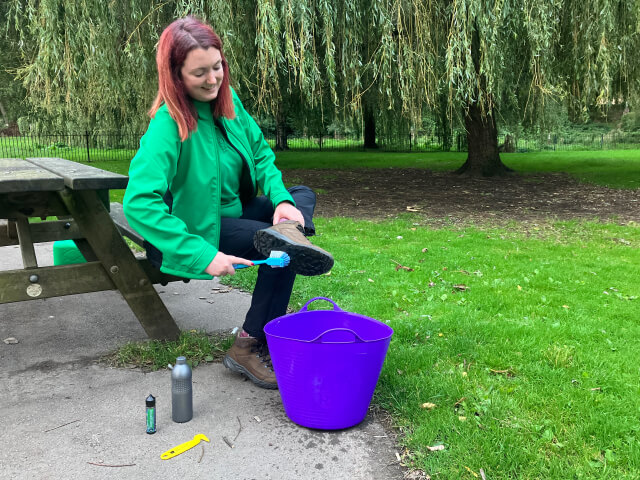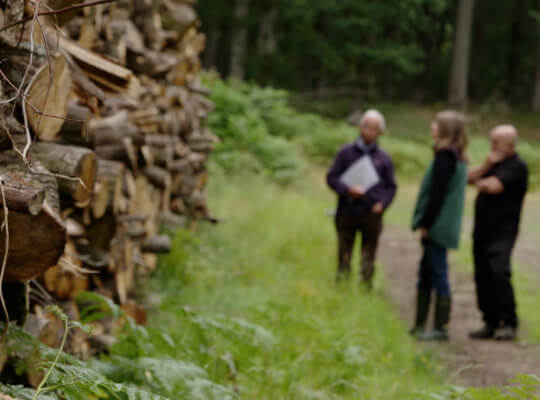Biosecurity refers to a set of precautions that aim to prevent the introduction and spread of harmful organisms, including non-native pests, such as insects, and disease-causing organisms (known as pathogens), such as some viruses, bacteria, and fungi.
Trees are under increasing pressure from harmful pests and pathogens. There are various factors that can add to this pressure. For example, the increase in global trade and travel provides more entry pathways for pests and pathogens. Additionally, climate change can facilitate a pest or pathogen becoming established in a new environment.
We have seen an increase in spread and detections of new tree pests and diseases in the UK, from the spread of Dutch Elm Disease in the early 1970s, the first discovery of invasive pest Ips typographus (eight toothed bark beetle) in 2018, to the detection of pathogen Phytophthora pluvialis in 2021. Pest and pathogen outbreaks have become more frequent since 2000, compared to the previous 30-year period.
As well as reducing the economic value of trees, these organisms have a wider negative impact on other species, habitats, and ecosystem services.
Carrying out biosecurity measures provides a barrier to the introduction and spread of tree pests and pathogens. The more biosecurity measures we action today, the more resilient woodlands will be to climate change in the future.

The key to a healthy, pest or pathogen-free woodland is understanding your site and the threats to it. Make sure you’re ready to tackle any problems by considering the following:
Species composition
Identify the tree species present on your site. This will help focus your efforts on the threats and biosecurity measures most relevant to you.
Potential pest and disease threats
Research which pests and diseases affect the tree species identified on your site – both now and in the future. Find out the risks and statutory obligations for each in case you need to report your findings to the relevant plant health authority.
Potential pathways
Identify the ways (natural or human-made) that tree pests and diseases could enter your site. Consider how the activities on your site could increase the risk.
Potential pathways include:
For example, oak processionary moth can spread naturally through flight but can also be introduced to sites during restocking through the movement of live oak trees. In England, management zones with movement restrictions of large oak trees are in place to help control this.


‘Think kit’
‘Think transport’

‘Think trees, plants, and materials’
Whether your land management objectives are economic, environmental or social, reducing the risk of introducing or spreading tree pests and diseases is a high priority. The best way to do this is by following biosecurity best practice.
It is essential that you record any suspicious findings and report these to the relevant plant health authorities. For trees, woodlands and forests, you can report findings to Forest Research via the TreeAlert online portal, or in Northern Ireland use TreeCheck.
To submit a report using TreeAlert you need to provide photographs and other details of the affected tree(s), including symptoms.


If a tree pest or disease is confirmed on the land you own or manage, here’s what you need to know:
You don’t need to take any action if the tree pest or disease found on your land is not notifiable. However, to ensure people’s and animals’ safety, and to minimise further spread, we recommend that you:
If the tree pest or disease is classified as notifiable, you may be issued with a Statutory Plant Health Notice (SPHN) by a statutory plant health authority (such as the Forestry Commission). If so, you must take steps to eradicate or contain the notifiable pest or disease:
If you’re issued with an SPHN, you must follow the instructions provided.
Note: if you receive an SPHN, you are not in any trouble. It doesn’t mean you’ve committed an offence or that you are at fault for the pest or disease being present. However, if you do not comply with the requirements of an SPHN, you may face enforcement action and prosecution.
A list of notifiable pests and diseases can be found on the UK Plant Health Information Portal, under pest and disease factsheets.
This page has been developed in conjunction with the Plant Health Forestry department at the Forestry Commission. Nursery images courtesy of the Forestry England Plant & Seed Supply Unit, Delamere.